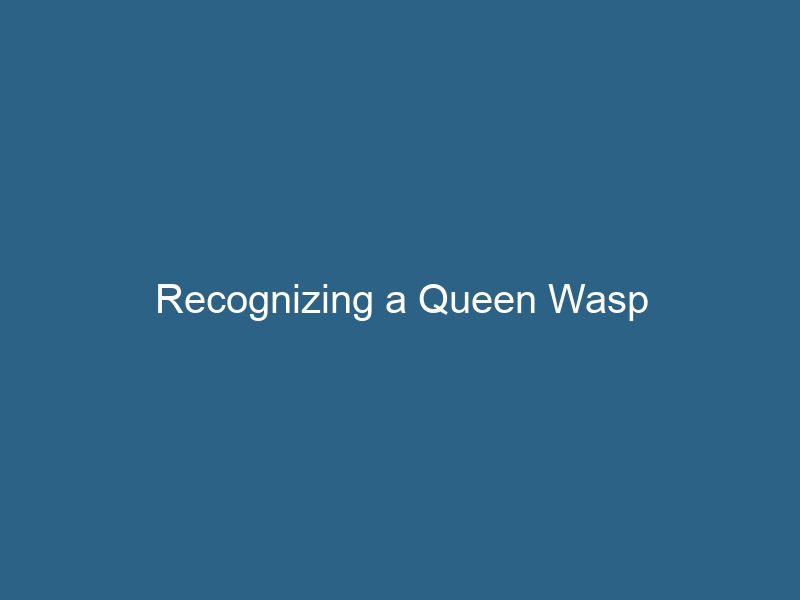Quck answer
To identify a queen wasp, look for certain distinguishing features. The queen is usually larger than the worker wasps, measuring about 20 mm in length. She has a robust and elongated body with a distinct waist. The color of the queen can vary depending on the species, but she typically has a darker and more vibrant appearance compared to the workers. The queen also has wings that are longer and more prominent. Additionally, queens are often found in the center of the nest and are accompanied by a retinue of worker wasps. By observing these characteristics, you can easily identify a queen wasp.
You may be familiar with queen bees and the Queens of England, but have you ever heard of a queen wasp or a queen hornet? These insects also have queens, and just like queen bees are important to beehives, a queen wasp plays a crucial role in wasp colonies. However, identifying a queen wasp based on its physical characteristics is not an easy task as they are well protected and difficult to spot.
The Role of a Wasp Queen
The primary function of a queen wasp is to lay eggs. She is the only female wasp in a colony that is capable of doing so, making her health and well-being vital for the entire colony. The rest of the wasps in the colony have tasks revolving around meeting the needs of the queen and the eggs. They work tirelessly to provide for her and care for the eggs. Eventually, they die off during the winter season. The queen wasp, carrying fertilized eggs, finds a warm and dry place to overwinter. She emerges in spring to start a new wasp colony.
Size of a Wasp Queen
No matter how much information you gather about the physical characteristics of a queen wasp or hornet, it is unlikely that you will be able to distinguish her from the rest. If you look at pictures of queen wasps, you might notice that they are sometimes slightly longer than worker wasps, about a quarter of an inch. In certain species, such as paper wasps, the queen is similar in size to the worker wasps. Some queen wasps in specific species have a pointed lower abdomen and a narrow waist that sets them apart from non-royal members of the colony.
However, these differences in size between queen wasps and workers are not consistent across all species. Therefore, identifying a wasp based on its size alone is not a reliable method. It is impossible to identify a paper wasp queen by size, as all paper wasps look the same from birth.
Identifying a Queen Wasp
The key to identifying a queen wasp lies in understanding its behavior rather than its appearance. Typically, the queen is the only wasp that survives the winter. As the cool winter weather arrives, the rest of the wasps die off, but the queen seeks out a place to overwinter. If she fails to find a suitable location, the wasp colony will not survive.
During the winter, queen wasps seek warm, dry, and protected areas. They look for places that offer protection from extreme temperatures, humidity, and predators. These hiding spots could be crevices in building walls or even inside decaying tree trunks. If you come across a solitary wasp during winter, it is likely to be the queen wasp.


